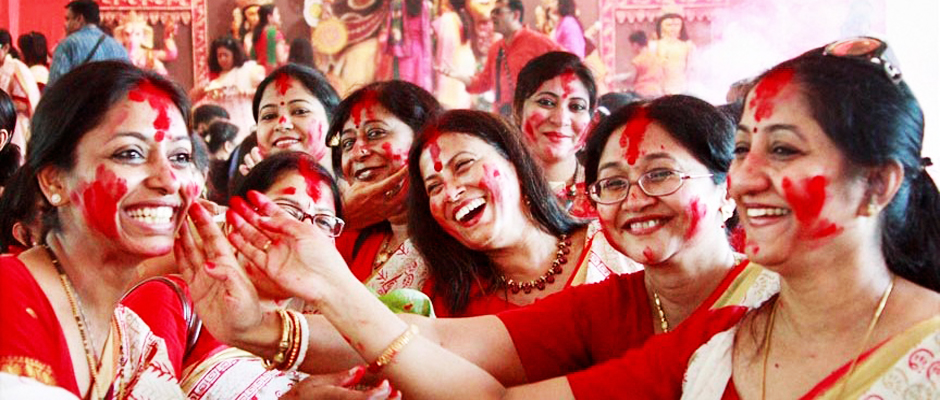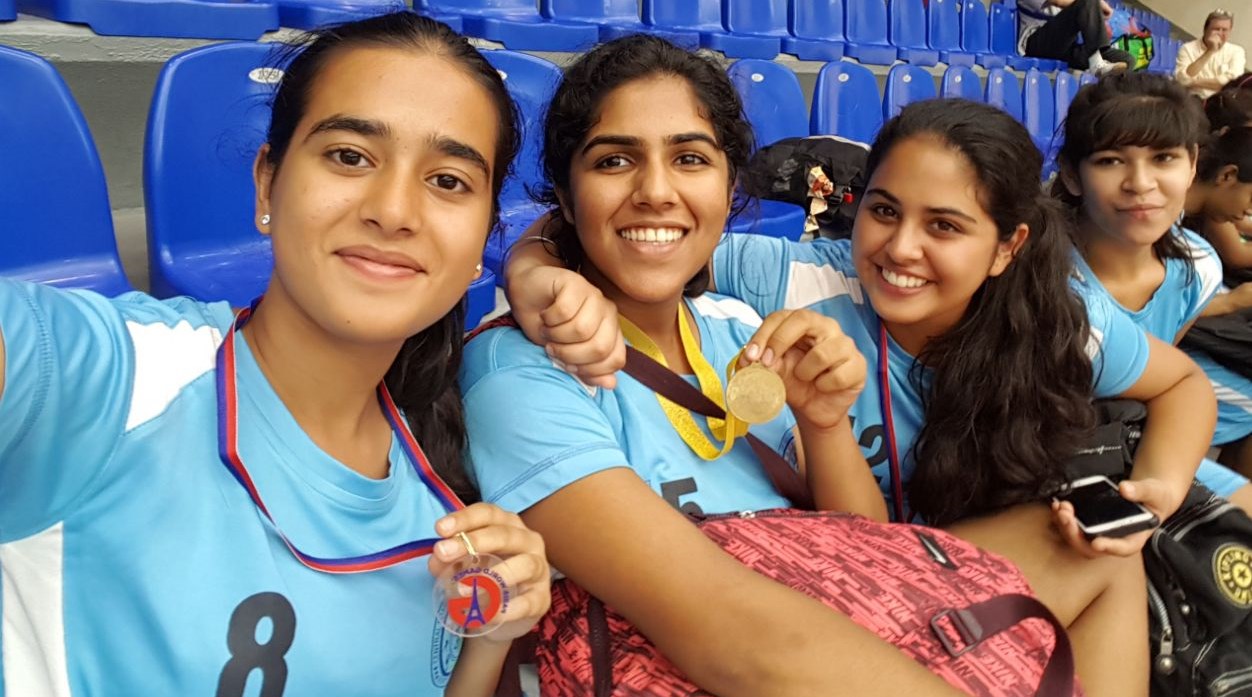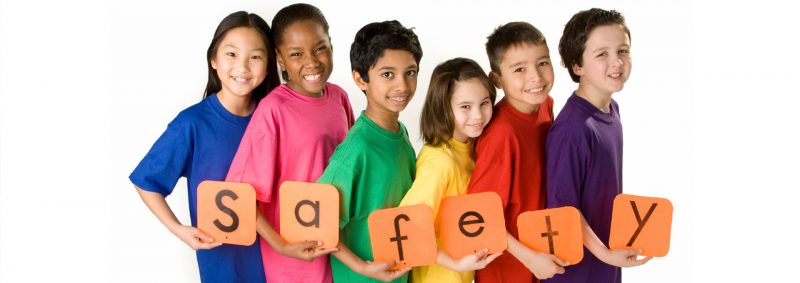Quintessential Bengali as depicted in most Hindi movies either shows us (Bengali women) in long flowing curly hair with sari with red border or struggling with our Hindi. Not all that is true, here I am making a humble attempt to decode what being a Bengali is all about – especially when uprooted from home town Kolkata.
Simply speaking Being a Bengali means one who is born in West Bengal to a Cultural Bengali Family. The word “Cultural” has a deep rooted meaning to our upbringing that only we know. (Remember it’s to be pronounced as KAL-CHA-RAL)… So what happens when we are uprooted from our base and move to another city… We even have a term for that – it’s called “Probashi Bangali” – simple translation would be sort of NRI status. We are of Bengali Origins living outside of Bengal. Why the distinction even I am not aware of this origin.
Before I tell you all about what is it like Being a Bengali – Some basic facts:
- Not all Bengali ladies are dressed in White saris with Red Border – ( most of us love our Jeans just as much)
- Dying declaration for the love of Fish isn’t done by all red blooded Bengalis, we do have few vegetarian Bengali as well though a very small number.
- We don’t only wear large red bindi – we buy the entire colour range and use them judiciously
- Not all of us can break into a rabindra sangeet and recite poetry
- We can and do speak Hindi without Bengali accent
Now some facts about us that you must know:
- Ghoti or Bangal ? – Very Important distinction that this topic alone can take us a year.. The debate is still on as to who is the better breed. It simply means where our roots – Bengal or Bangladesh. If you are ever caught in between one of these discussion – best to keep quiet about it or just mention the magic word “Food” that always gets our attention.
- Naykami – this is a Bengali girl sometimes even boys copyright. I am yet to figure out the exact meaning of the same. Loosely translated would be Coy… but that doesn’t do any justice to what it is.
- Shorbonaaash! Eie ki holo – OMG if you ever hear a Bengali say this , my only advice is RUN – as it literally means “end of the world” (yes we do dramatize a lot)
- Dak Naam – Meaning pet names. This is very important as all trotting toddlers will have a cute dak nam that is hideous when they are older – but we Bengali mothers simply enjoy embarrassing our Kids. I personally know a few Babla, Babai, Bhombol, tuki, Potol, Gaja and for some strange reason we have over used Babu. As a social experiment once when you are in a durga puja pandal – just make an announcement: “Will Babu please come to stage? I kid you not you will have at least 20 of them responding at all age. We haven’t spared our husband as well. All Bengali men are trained after marriage to respond to some basic names or just sounds that goes like “Ogo Suncho” Translated would mean “Are you listening?” Pray tell me which husband whichever the community will not respond to such a term uttered by the wife.
- Maaryer Dibbi – loosely meaning Ma ki Kasam. Here Ma can mean own mother or Goddess Kali. This is our version of a lie detector test and is the ultimate judge of one’s truthfulness. You just cannot lie if you have taken Maayer Dibbi
- PNPC – Meaning “Poro Ninde Poro Chorcha” – translation would be “gossip”. Favourite pastime for almost everyone in some degree or other it’s just that we have a specific term for it with its own abbreviation that makes its utterly adorable. It’s harmless fun.
- And most importantly do not separate a Bengali from his food – they are sort of synonyms. A simple meal usually means a 6 course with rice at the centre surrounded by First Tetho ( Bitter), Bhaja ( Fried) , Dal ( Pulses) , Tarkari ( Vegetable mix) aamish ( Non Veg – Fish or chicken or mutton or even all three) , Misti ( Sweets) and papad.
- And by nature Bengalis are known for their sweetness – both our language and our love for sweet is so great that we even prefer our curd sweet ( called Misti Doi)
I am one such Probashi Bengali who has been out of home town since 2002, and for the last 5 years or so is calling Gurgaon as home. Like any other community – people like us who cannot be a part of the roots we have grown up with – we hunt out the familiar things where we are.
When I first moved here, since I was a veteran already of being away from Kolkata, I went to the place that is known for all Bengalis
CR Park or Chittaranjan Park
Nothing comes close to talking to the shopkeepers in the melodious sound of your own mother tongue. It’s a must visit for all of us as it’s a feast of the taste buds. There are 4 Markets there – So look for them and explore what you need – Fish, Bori, Jharna Ghee, Gobindho Bhog Chal, Aam Sotto, Dulaler Tal MIchri , Bengali Sweets, Temples, Traditional Saris and Kurtas and even cultural societies that do all the durga puja. I am not translating everything here as Bengalis will know what I am describing and for my non – Bengali reader, there is lot to discover in these markets.
My recommendation – Market 4 – for the Phucka with Raju, Sweets from Kamala Sweets near the Market – rest there are just so many options of street food that I can’t just pick up one option I will just list out what one can try in terms of snacks.
Rolls, Kobiraji, Fish Fry and Fish Cutlet, Vegetable Chop, Singara
For meal – Try a thali as that sort of covers almost everything that I described in the simple meal for a Bengali.
Now Closer home in Gurgaon – for food one can visit
- Oh Calcutta – Cyber Hub
- Ki Hangla – SuperMArt Phase IV
- Kolkata Kiosk – Omaxe City Centre Mall – Sohna Road
- Tangra – West Bengal Stall at Kingdom of dreams
- Sonar Bangla – Sector 56 Market and Galleria in Phase IV
- Kusum Rolls – Phase III, U Block
There are few more, but these are the ones I have been to , and my personal favourite is Oh Calcutta for a full meal, Fish fingers and rolls at Ki Hangla . Luchi and Kosha Mangso at Sonar Bangla. And Rolls at Kusum Rolls
Bengali Sweets – my personal favourite is Bikanerwala at Sector 29. The first section is dedicated to Bengali sweets, Sondesh and Rossogolla. Mother Diary Misti Doi is closest to the taste I remember to Misti Doi from Kolkata.
Sector 31 Huda Market, next to the electricity Board Office is a Puchka wala – closest to what is available at CR Park.
Palam Vihar Kali Bari – an established mandir / temple for all time and durga puja as well.
For Fish many options are there – I find the best ones with a lot of variety at David and Sons – Arjun Marg. Best time to visit is over the weekend and you will meet fellow Bengalis as well. Next would be Vypar Kendra, Bristol Market and the most sophisticated Air Conditioned markets like Spencer’s / Auchans and LeMarche.
Bengali Magazines such as Sananda / Desh and Anandalok is easily available at the Book Store at Arjun Marg or the fish stall at Vypar Kendra. They also sell Bori, Jharna Ghee, Cookme Brand Masala, Tapas Aachar (pickle)
And of course Durga Puja is celebrated with total Fanfare and you will not miss home once you visit them. You can find the details here –
In short Being a Bengali in Gurgaon is as comfortable as being at one’s own home town.
Banner Image Courtesy: Img Courtesy: http://www.business-standard.com/photo-gallery/general/durga-puja-festival-1291.htm






Thank you so much for the food places for Bengalis in Gurgaon. There is one more that I thought I should refer "I Just Want to Eat" its somewhere in sector 51. I tried the Mutton Biryani, one of the bests in Kolkata style…